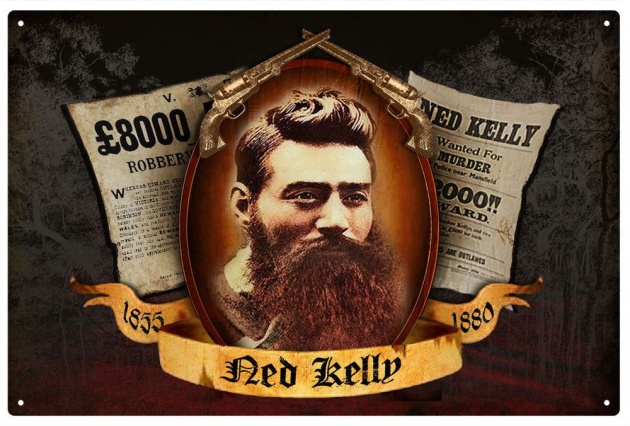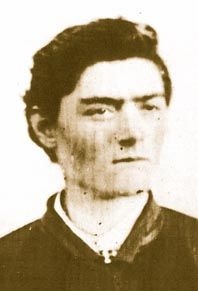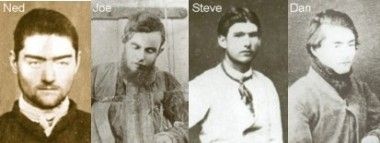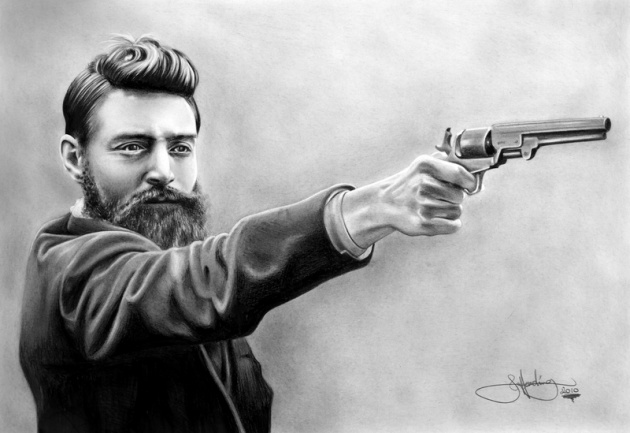
Waking at dawn, after only a few hours of restless sleep, the condemned prisoner Ned Kelly falls to his knees and prays. With nothing else to do, he lies back down and waits for his execution at 10 am. A petition to free him has been signed by 30,000 people, but to no avail. When the time comes, Kelly is led from his dank cell in Old Melbourne Gaol, walking briefly through the prison gardens where he remarks how pretty the flowers are. His usually cheerful demeanour disappears as the noose is fitted over his great, bushy beard. Convicted for a host of crimes, including killing three police ocers, Kelly is hanged on 11 November 1880. While some celebrate the news, others mourn the loss of a national hero.
DESCENDING INTO CRIME:
When Edward ‘Ned’ Kelly was a boy, he risked his life saving a friend from drowning near his home in Victoria, for which he was rewarded with a green sash – a gift he treasured his whole life. But Ned, the son of an Irish convict transported to Australia for pig stealing, descended into crime shortly afterwards.
At 14, Kelly was arrested for supposedly attacking a Chinese trader, and came to the attention of the law again a year later for his connection with a horse-stealing bushranger (or outlaw). In 1870, Kelly was sentenced to three years for riding a stolen horse – during his arrest, he humiliated the policeman by climbing on his back and riding him like a horse. After his release, the equine robberies continued along with his brother Dan, as well as highway hold-ups. e Kelly brothers went on the run in April 1878 after a policeman, Constable Fitzpatrick, accused Kelly of shooting him in the hand – a spurious claim. They were joined by friends Joe Byrne and Steve Hart and the Kelly gang was born.
BUSH MURDERS:
The police dispatched a squad of four ocers in pursuit in late October, but when they made camp in a desolate part of the bush named Springybark Creek, they inadvertently walked into Kelly’s trap. In the surprise raid, three of the law men were killed.
Kelly shot Constable Lonigan in the head when he went for his gun, Constable Scanlon was hit in the back in a spray of bullets, and Sergeant Kennedy was mortally wounded. Kelly would later claim, “I could not help shooting there or else let them shoot me which they would have done had their bullets been directed as they intended them.” In response, the Felons’ Apprehension Act was passed, making it legal to shoot any member of the Kelly gang dead.
NATIONAL SYMBOL:
There was no stopping Kelly though – between December 1878 and February 1879, his gang stole thousands in cash, silver and gold from two banks in Euroa, Victoria, and Jerilderie, New South Wales. Following the latter robbery, Kelly dictated his now famous 8,000-word letter, in which he justifies his crimes. His attack on unfair police persecution gained him many sympathisers, who believed he symbolised a uniquely Australian spirit of independence, but the authorities issued a reward of £8,000 for the gang, the largest in the British Empire at the time.
Laying low for over a year, the gang reappeared on 26 June 1880, when Joe Byrne shot and killed Aaron Sherritt, a friend-turned- informer, at his own front door. Expecting police retaliation, the gang planned a trap at Glenrowan, Victoria. They secured the town, took over 60 hostages in the hotel and ripped up railway lines to wreck the incoming police train. e plan would have worked were it not for a schoolteacher who escaped and warned the railway.
Despite the setback, all four gangsters had something the law enforcers didn’t: bulletproof armour. thick plates of iron protected their bodies and shoulders while helmets with eye slits kept their heads safe. At around 44 kilograms, they were heavy – imagine lifting a big dog – but Kelly was able to slip into his before the police attack began. In the chaos of the gunfight, all – except Ned – of the Kelly gang were killed, as well as several hostages. Escaping the hotel in his armour, Ned, armed only with a single revolver, returned fire. Bullets pinged o his breastplate, but his legs were unprotected. Shot several times in the legs and hands, he finally gave up and was taken into custody. Under his armour, he was wearing the green sash he had been given as a boy.
Kelly remained upbeat while in prison – when told of the time of his execution, he allegedly replied: “Such is life”. He may have been a murderer and egotistical scoundrel but to many Australians, he was a folk hero. To this day, Ned Kelly divides opinion in Australia.
NED KELLY (An Iron-Clad Outlaw Who Divides Australia)
Posted on at



